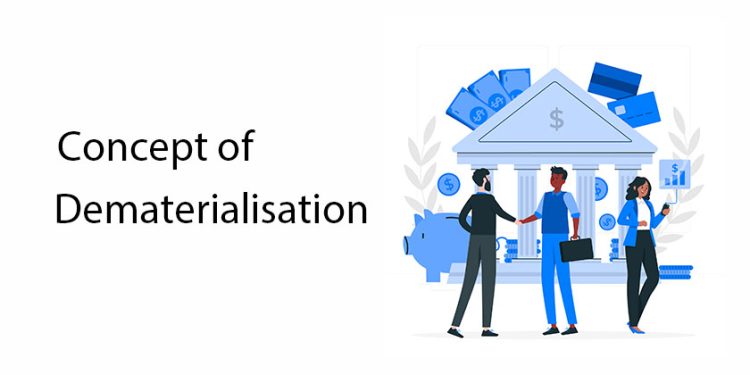
Lately, the processes of finance have been going through changes with an added dimension towards digitalization. The beginning of mutual dematerialization of shares in the securities market occurs quite recently. Gone are the days of physical share certificates that an investor could misplace or may get ruined in some rare cases, or be subjected to fraudulent activities. Electronic transactions of securities on the market have taken over these days through the demat account to put in the security, efficiency, and ease of trading.
What is Dematerialization?
Dematerialization relates to the process of converting physical share certificates into electronic form. This enables investors to hold and trade securities digitally, reducing risks associated with physical documents and contributing to the smooth functioning of modern stock markets.
Why is Dematerialization Important?
Before dematerialization, there was a whole lot of hassle for investors in dealing with physical share certificates. They were always in danger of losing them, and forgery and damages were risks along with complex paperwork for transactions. With the dematerialization of shares, all of these worries were taken care of, and investing thus became highly secure and convenient for individuals as well as institutions.
Dematerialization Process
This procedure for dematerialization incorporates some vital steps to ensure smooth transfer of title of ownership from physical securities to electronic:
Depository Partner: The investor is required to approach a registered depository participant such as banks, financial institutions, or brokerage firms for carrying out the procedure of dematerialization.
Opening of a Demat Account: To hold electronic securities, an investor requires a Demat Account with the Depository Participant (DP). Demat account opening involves compliance with KYC, whose requirements include identity proof, address proof, PAN card, and bank details.
Turning in a physical certificate: Clients submit their physical share certificates along with a Dematerialization Request Form (DRF) to the DP.
Validation and Approval: The DP then forwards the verification request to the registrar and transfer agents (RTA) of the company.
Creation of Electronic Form: The physical shares are extinguished but credited as electronic securities to the demat account of the investor upon the completion of the verification process.
Notification: Upon successful dematerialization, the investor is notified, and the shares become available for trading in electronic form.
Dematerialization is an art making stock trading and investment more advantageous given several advantages, such as:
1. Safety and Security
The advantages of e-holding are many: there is no loss, theft, or forgery of certificates. They can be assured that the securities are safely kept in Demat accounts.
2. Easy and Fast Transactions
In the existing exhaustive paperwork conditions, transferring shares takes too long to be processed. By dematerializing shares, transaction execution becomes instantaneous, thus improving liquidity in the market.
3. Economic
Dematerialization reduces additional costs such as handling and courier charges associated with physical securities.
4. Worry-Free Portfolio Management
Demat accounts offer a convenient way to track, manage, and transact securities via online platforms.
5. Nomination Facility
Investors can make nominations for their demat accounts, which facilitate uncomplicated transfer of securities, if any unfortunate event occurs.
6. Easy Corporate Actions
Corporate actions like dividends, bonus issues, stock splits, or rights issues are directly credited to the Demat account, eliminating manual procedures.
7. Access to Different Kinds of Funds
Besides shares, bonds, mutual funds, government securities, and exchange-traded funds (ETFs) can be held in a Demat account by investors.
How to Open a Demat Account?
Opening a Demat account is simple; it can be done online as well as offline.
Choose a Depository Participant (DP): Choose a reputed DP that offers quality customer service and lower transaction charges.
Fill out the Account Opening Form: Include details of necessary information, such as personal and financial documents.
KYC Verification: Attach identity proof, address proof, PAN card, and bank details to the verification.
Sign the Agreement: Terms and conditions regarding the Demat account should be accepted.
Receive Your Account Details: You would be provided with your Demat account number and login credentials after verification.
Conclusion
The dematerialization of shares has given trading and holding securities a leap in security and efficiency. Open a Demat account for ease and security, whether you are an old-time investor or just beginning in this weird digital financial world of today.

0 Comments
Post Comment